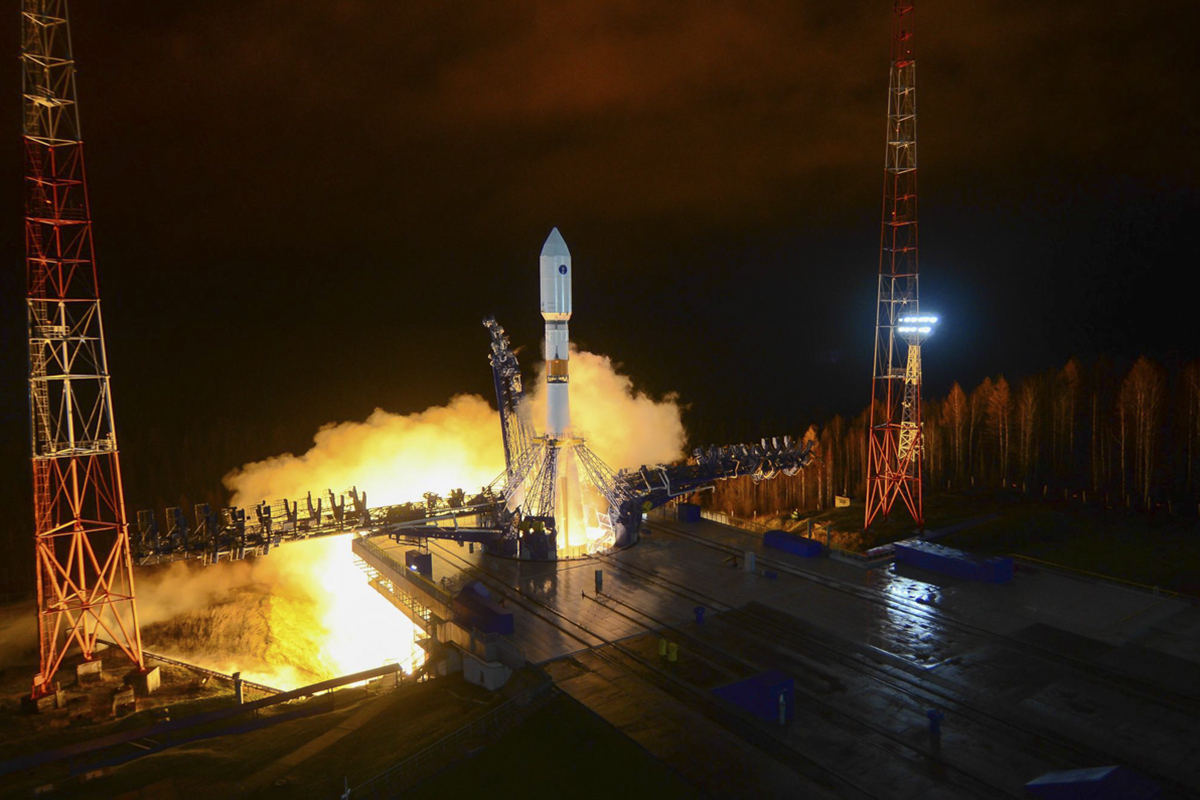Soyuz Rocket Successfully Launches Russian Navigation Satellite


Over the weekend, Russia completed its second successful Soyuz launch since the Oct. 11 failed crew launch, with liftoff taking place on Saturday (Nov. 3) at 11:17 p.m. local time (4:17 p.m. EDT, 2017 GMT).
The launch, from a pad at Plesetsk Cosmodrome located about 500 miles (800 kilometers) north of Moscow, put a navigation satellite called Glonass-M into orbit. A Soyuz-2.1b rocket was used during the launch — the same model as in Russia's most recent launch, and a variation on the model used for crewed flights, including the Oct. 11 failure.
According to a statement released by Russian space agency Roscosmos, the satellite deployed successfully after launch and began communicating normally with Earth.
The launch came just a few days after Roscosmos completed an investigation into the Oct. 11 failed launch, which sent a NASA astronaut and a Russian cosmonaut plummeting to the ground. The investigation found that the abort was triggered when a faulty sensor caused a strap-on booster to separate incorrectly and hit the main booster.
Roscosmos has said that its next flight of the rocket model that failed, the Soyuz-FG, will occur on Nov. 16 during a cargo launch to the International Space Station in preparation for the system's return to crewed flights on Dec. 3.
Editor's Note: This article was corrected to clarify the statement from Roscosmos.
Email Meghan Bartels at mbartels@space.com or follow her @meghanbartels. Follow us @Spacedotcom and Facebook. Original article on Space.com.
Breaking space news, the latest updates on rocket launches, skywatching events and more!

Meghan is a senior writer at Space.com and has more than five years' experience as a science journalist based in New York City. She joined Space.com in July 2018, with previous writing published in outlets including Newsweek and Audubon. Meghan earned an MA in science journalism from New York University and a BA in classics from Georgetown University, and in her free time she enjoys reading and visiting museums. Follow her on Twitter at @meghanbartels.
